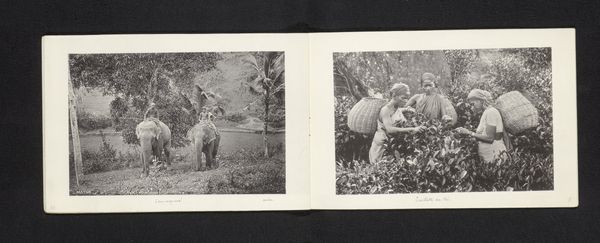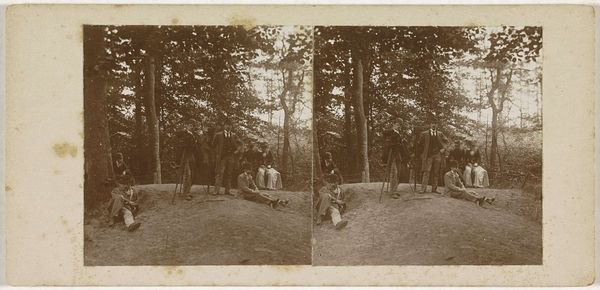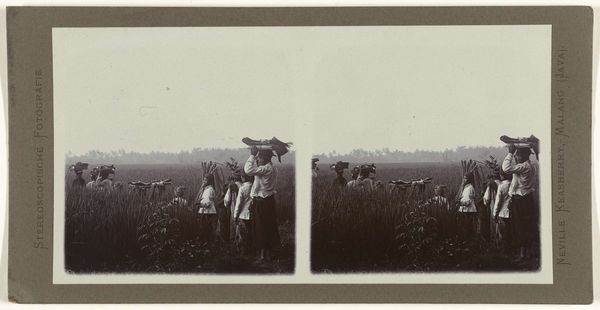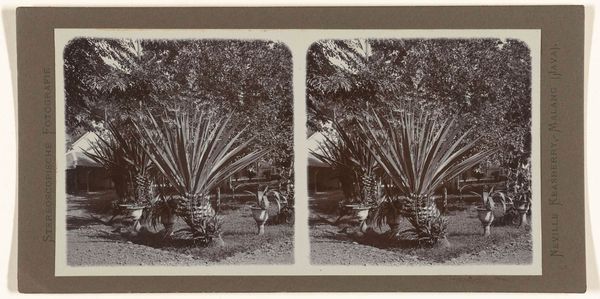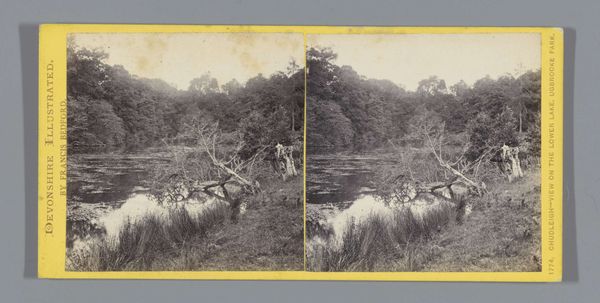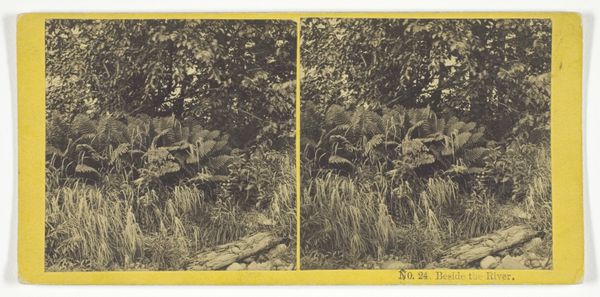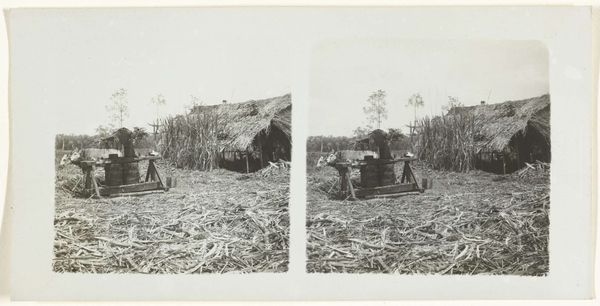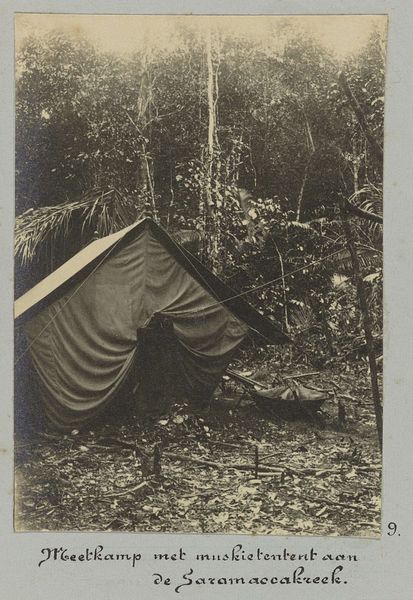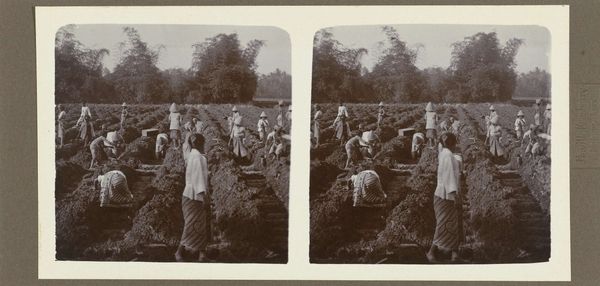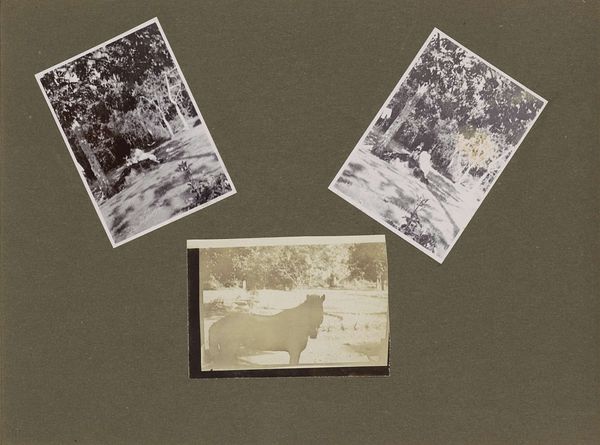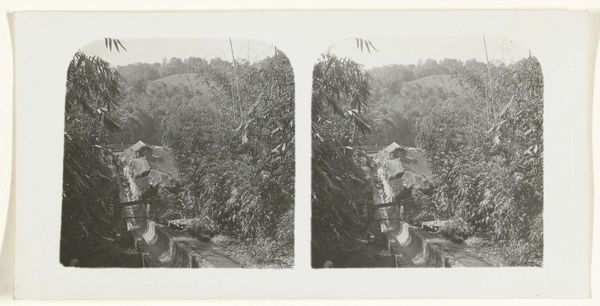
photography, gelatin-silver-print
#
portrait
#
landscape
#
photography
#
gelatin-silver-print
#
realism
Dimensions: height 76 mm, width 152 mm
Copyright: Rijks Museum: Open Domain
Editor: So, this is Neville Keasberry’s gelatin silver print, "Het oogsten en pellen van jagung in de schaduw," taken sometime between 1900 and 1935. There's something about the composition – the way the workers are almost enveloped by the cornfield – that feels very intimate. What strikes you most when you look at this? Curator: The power dynamics inherent in the visual representation. Considering that this was taken during the Dutch colonial period in Java, how do you think this photograph functioned? Was it a celebration of the land, or something else entirely? Editor: That's a really interesting point. I hadn’t really considered that. What do you mean exactly by "functioned"? Curator: Photographs like this often played a crucial role in constructing a colonial narrative. Think about how this image might have been circulated – in postcards, exhibitions – shaping perceptions of Java, its people, and its resources for a Western audience. Did it perhaps contribute to a romanticized or exoticized view, obscuring the realities of colonial exploitation? Editor: I see. So it's not just about what’s *in* the photograph, but also who the intended audience was, and what message they might have taken away from it. Is that something Keasberry would have been conscious of? Curator: Absolutely. Whether consciously or not, Keasberry's work contributes to a visual record that supported the colonial project. Even a seemingly benign image like this had a political life within that specific historical context. It's a potent reminder that images are never neutral; they always carry cultural and political baggage. Editor: Wow, I’ll never look at historical photographs the same way again! It makes you wonder what other stories are hidden in plain sight.
Comments
No comments
Be the first to comment and join the conversation on the ultimate creative platform.


